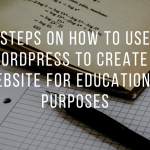This is a guide for those who are at a crossroads and don’t know where to go: come up with a headline right away, go googling “how to write an article” materials, or throw in whatever comes to mind? We hope this step-by-step guide by our cheap essay writing service Bidforwriting.com will help you get from idea to publication.
Step 1: Identify your audience
In order to interest the reader, it is important to speak to him or her in the same language – to consider the benefits of the product that are important to your audience. That’s why the first thing we do is determine who the article is for, and keep the reader in mind the whole time, right up to the point of selecting illustrations.
Who may be interested in our article about choosing a broom:
- Parents who are looking for their child’s first broom for school lessons or the Quidditch section;
- amateur athletes who decided to learn to fly themselves as adults
- ordinary wizards who are looking for a broom to replace an old one that broke, but are not familiar with modern models.
Who is not our target audience:
- professional athletes-quidditchists, because they themselves know the market well and keep up with the latest innovations;
- Fashionistas, because they are after rare limited editions and trendy products, they can change their broom once a season;
- the aristocrats, followers of certain brands, because for them a broom is a status thing and to show off in front of colleagues in the Ministry of Magic. They’re more interested in exclusivity and signature design than in practical, mid-priced brooms.
Step 2: Understand why you need the text and why the reader needs it
Before you write a text, ask yourself two questions: why am I writing this text and why will it be read? When you answer both, you’ll understand what you need to write about.
Why do we write a text?
To talk about the Harry Moettel range of brooms and to sell as many new brooms as possible.
Why the article will be read?
Each segment of the target audience has requirements that the article should focus on.
Parents: comfort, safety, ease of operation
It is important for them to know what to look for in order to buy both comfortable, easy-to-drive, and safe transport for the child.
Amateur athletes: convenience, comfort, benefit
Flying on a broomstick once upon a time in a distant childhood. Since then, technology in the vein of automatic speed shifting and a folding handle has emerged, and amateurs want to know which technologies will be useful to them and which only the professionals need.
Regular wizards: durability, simplicity, benefit
The old broom is worn out, you need to buy a new one. But not some junk that will break in a year, but a reliable and convenient vehicle that serves long, breaks down rarely, and can be repaired yourself. They do not need any modern technology and features that increase the purchase price, they are looking for the simplest broom made of good materials. It’s important to make sure that every gallon invested pays for itself.
Step 3: Put yourself in the reader’s shoes: what questions do you want the article to answer?
As a reminder, the topic of our article is: “How to choose the right broom for flying.” Each paragraph of the article should gradually narrow it down, sorting out the different functions of a broom and the life situations in which they will be useful. Off-topic facts (history of the Harry Möttel Company; the popularity of brooms in different countries; the story of how the author of the article first sat on a broom and fell into a thicket of mandrakes) should be avoided.
Put yourself in the shoes of potential readers and ask questions on their behalf.
Throw in questions as soon as you start researching a topic. Write them out on a piece of paper, save them in notes, and send yourself voice mails in messengers. Let it be a pile of hastily formulated questions, let them repeat – later sorted. The main thing is not to miss a single interesting thought.
We will not write about the uniqueness, exclusivity, and uncompromising comfort of brooms – these are the characteristics of premium goods. Our audience is interested in more practical things.
Step 4: Write a Lead
A lead is an introduction to your article, the “hook” with which it is important to hook the reader into wanting to read on.
You can use bait – describe an episode from your life: “Three years ago I fell off my broom and broke all my ribs because I couldn’t fly, so I bought a powerful Nimbus 7,000 with second space speed. Now I’ve got it all figured out, and I’m telling you how to choose the right broom.
You can immediately give out the bottom line: “Choose a good manufacturer – it’s more expensive but more reliable. If you like several brooms, choose the lighter one. The article tells you why.
But it’s better to answer the question right away why you wrote this article . No intrigue or surprises – everything is to the point. The author has no creative anguish, the reader immediately understands what he learns from the article.
“Finding a good broom is a difficult task. But not because there are not enough of them, but on the contrary: there is too much choice. In this article, we will help you to navigate their variety and tell you how to choose a universal broom for the house: so that the child would get good grades at school, and you would fly over the park in the evening, and the grandmother would comfortably get from the hut on chicken legs to your house.
Step 5: Make sure your voice and tone match your audience
Our readers have not experienced athletes – so we won’t bombard them with complicated terms. And we’ll explain all the necessary ones like “turbulence cushioning.”
Our readers are not premium buyers who chase exclusivity. So, all pathos and adjectives in the superlative degree we remove.
Our readers are not schoolchildren, so we don’t allow ourselves any “this broomstick is your new crush.
Our readers are ordinary people of different ages, education and command of professional vocabulary. Therefore, we communicate in “you”, but not aloof, but in a friendly way. We try to form an image of a teacher-mentor, who will teach us how to understand brooms and sell the right one.
Step 6. Select illustrations for the article
Illustrations should not decorate the article but complement it. With them, the text becomes more convincing and reveals new facets to the reader. At the same time, it is important that the reader can associate himself or herself and his or her lifestyle with what is shown in the illustration.
That is why we will not show in our article a photo where an athlete enters a turn at a great speed – parents may consider such a broom dangerous, and ordinary magicians will decide that one has to pay a lot for such opportunities.
Photo with a broom encrusted with diamonds, we’ll save for the aristocrats for the article about the limited collections. Our audience is focused on comfort and profit, not luxury.
And finally, a picture of a broom lying alone on the counter is better not to be used anywhere at all. A boring picture will not add images and new meanings to our article.
What illustrations will suit us:
A photo of a child at Quidditch practice, with happy parents standing in the stands behind them;
a photo of a family flying over the neighborhood;
a photo of retirees who are very comfortable riding a broomstick with a built-in padded seat;
close-ups of parts of a broom with a visual comparison: the control systems, the shape of the wires, or the way the wires are woven.
Step 7: Check for errors and typos
For an author to publish an article with errors and typos is like a chef serving borscht right in the pot. It’s tasty, but there’s a sense of sloppiness. If you’re willing to spend 10 hours finding arguments for the reader, find another 20 minutes to proofread the text. It’s a concern for the reader, a benefit to your reputation, and 100 Gryffindor points.
These seven steps are just one way to write a good commercial text without forgetting anything important.




